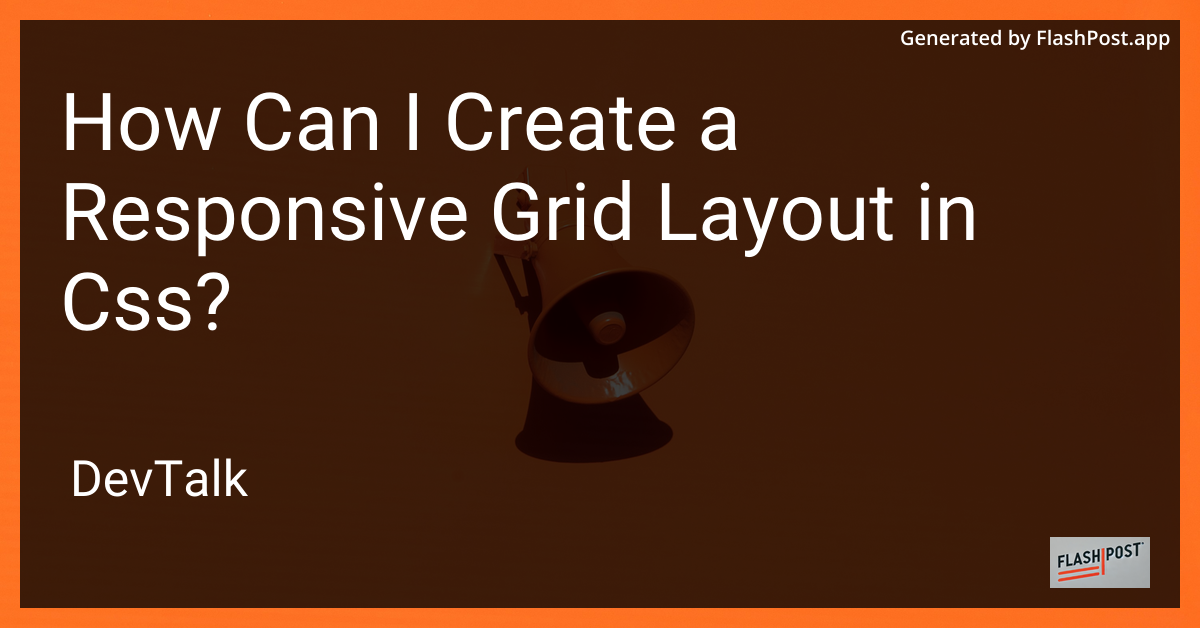How Can I Create a Responsive Grid Layout in Css?

How to Create a Responsive Grid Layout in CSS
Creating a responsive grid layout is essential for modern web design, allowing your content to adapt seamlessly across different devices and screen sizes.
CSS Grid is a powerful layout system that offers unparalleled flexibility and control. In this article, we'll explore how to create a responsive grid layout using CSS.
What is CSS Grid?
CSS Grid is a two-dimensional layout system designed to handle both rows and columns, making it a superior choice for creating complex and responsive layouts. Unlike Flexbox which is one-dimensional, CSS Grid is built for complete control over precise layout design.
Setting Up a Basic Grid
Before diving into responsive design, let's set up a basic grid structure.
.container {
display: grid;
grid-template-columns: repeat(3, 1fr);
gap: 10px;
}
.item {
background-color: #edf2f7;
padding: 20px;
text-align: center;
}
HTML Structure
<div class="container">
<div class="item">1</div>
<div class="item">2</div>
<div class="item">3</div>
<div class="item">4</div>
<div class="item">5</div>
<div class="item">6</div>
</div>
In this example, we set up a grid with three columns, and each column takes up equal space due to 1fr (fractional unit). The gap property adds space between grid items.
Making the Grid Responsive
To make your grid responsive, use media queries to adjust the layout for different screen sizes. You can change the number of columns based on the viewport width.
Responsive Grid Example
@media (max-width: 768px) {
.container {
grid-template-columns: repeat(2, 1fr);
}
}
@media (max-width: 480px) {
.container {
grid-template-columns: 1fr;
}
}
In this setup, the grid switches to two columns on medium screens and one column on small screens. This fluid adjustment ensures your content looks great on all devices.
Advanced Layouts
With CSS Grid, you can create more intricate layouts by positioning items specifically within your grid.
Example: Complex Grid Layout
.container {
display: grid;
grid-template-columns: repeat(3, 1fr);
grid-template-rows: 200px 200px;
gap: 10px;
}
.item1 {
grid-column: 1 / 3;
grid-row: 1 / 2;
}
.item2 {
grid-column: 2 / 4;
grid-row: 1 / 3;
}
This configuration allows you to dictate specific rows and span items across columns depending on your content needs.
Explore More
For those interested in learning how to create responsive grid layouts using Tailwind CSS, take a look at the following resources:
- How to Remove Widgets from Grid in Tkinter: A practical guide to grid layouts in Tkinter.
- How to Use Grid in Tailwind CSS: Learn grid implementation with Tailwind CSS.
- How to Make Two Grid Responsive Layout in Tailwind: A tutorial on making responsive grids.
- Create Responsive Grid Layout in Tailwind: A guide to creating grid layouts in Tailwind.
By leveraging CSS Grid, you can build adaptable, efficient layouts that are crucial in today's diverse device landscape.
This markdown-formatted article provides a comprehensive guide to creating responsive grid layouts using CSS, with additional links for further exploration on related topics.